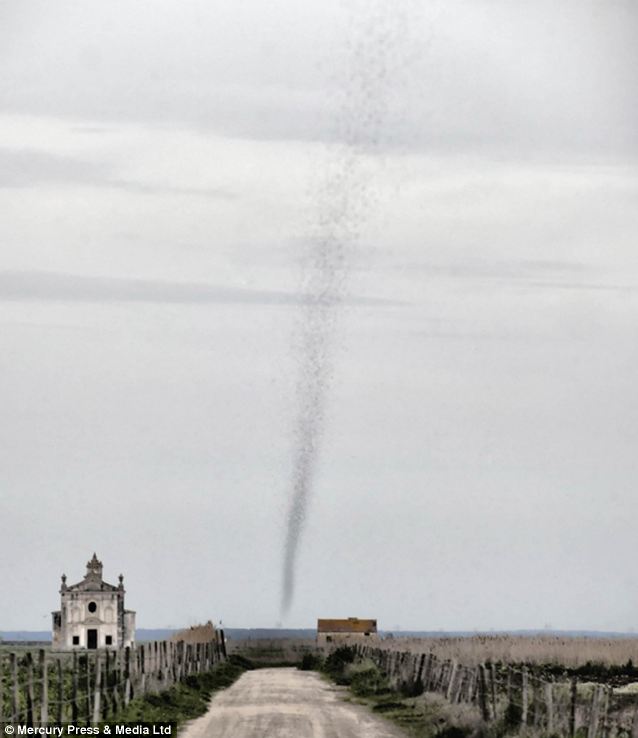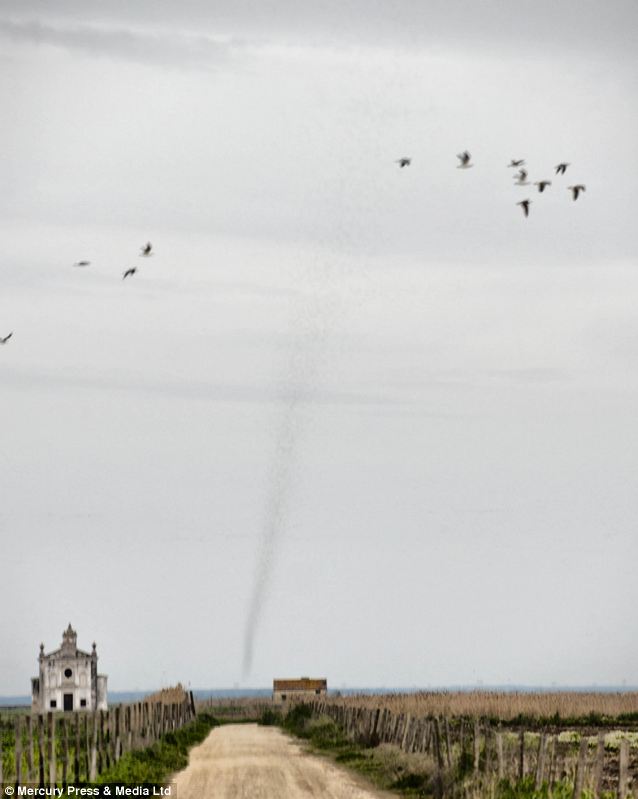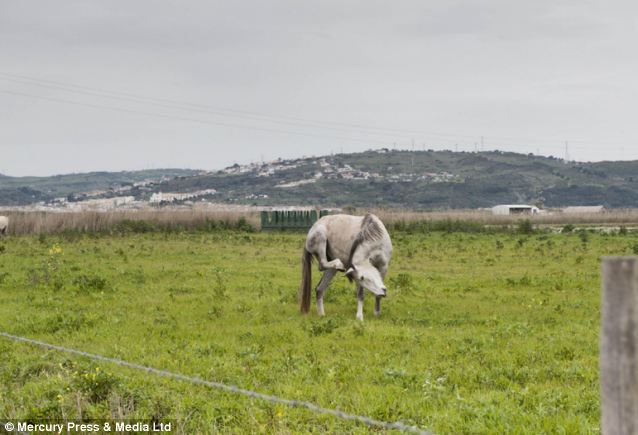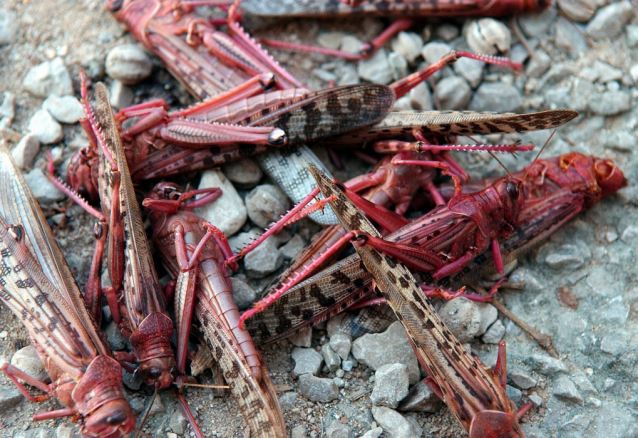
* Quick thinking photographer Ana Filipa Scarpa captured the dramatic moment on film
* Ms Filipa Scarpa initially feared the biblical plague was an actual tornado
* A red locust can eat its own bodyweight in fresh food a day and travel 20 miles
A Portuguese wildlife photographer captured the dramatic moment a plague of LOCUSTS swarmed across the countryside
Ana Filipa Scarpa was in Vila Franca de Xira, north of Lisbon when she spotted what she initially thought was a dust storm.
However, within moments, Ms Filipa Scarpa realised that the 1,000 foot high column was alive and made of insects.


She said: 'At first I believed it was a wind twister, the animals around me were very nervous.
'I stayed in my place and looked for a safe place, but there was none, and at the same time the twister was never reaching me.
'So I entered my car and drove towards it. After same metres I realised that an enormous amount of insects were in fact the tornado.
'I suppose it would be better a wind twister, than a bug twister,' she said.
The locusts disappeared before arriving at Ms Filipa Scarpa's position on the roadway.
'I cannot imagine what could happen to me if they had caught me.
'It's not known for sure what kind of bugs make up this swarm, but they may be red locusts.
'The swarm extended perhaps 1,000 ft. It was nearly a quarter of a mile away from my position and I took the picture with a 200 mm lens.
'Perspective makes the leading edge of the swarm appear smaller and thus tapered.'
The red locust can have a devastating impact on the developing world where outbreaks can threaten 15 million people with starvation.
A special United Nations team has been established to counter the menace presented by red locusts in southern and eastern Africa.
The voracious bugs can travel more than 20 miles in a day, devouring crops.
A locust will eat its own two gram bodyweight in fresh food each day. UN figures suggest that one tonne of red locusts will eat enough food to nourish 2,500 people for a day.
The United Nations runs special eradication schemes across large areas of Africa to keep red locust numbers down.




Reader Comments
to our Newsletter